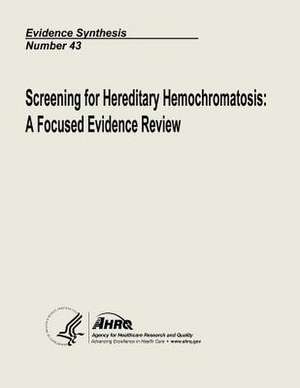Screening for Hereditary Hemochromatosis
Autor U. S. Department of Heal Human Services, Agency for Healthcare Resea And Qualityen Limba Engleză Paperback
Preț: 117.73 lei
Preț vechi: 123.92 lei
-5% Nou
Puncte Express: 177
Preț estimativ în valută:
22.53€ • 23.44$ • 18.60£
22.53€ • 23.44$ • 18.60£
Carte disponibilă
Livrare economică 25 martie-08 aprilie
Preluare comenzi: 021 569.72.76
Specificații
ISBN-13: 9781490543130
ISBN-10: 1490543139
Pagini: 98
Dimensiuni: 216 x 279 x 5 mm
Greutate: 0.25 kg
Editura: CREATESPACE
ISBN-10: 1490543139
Pagini: 98
Dimensiuni: 216 x 279 x 5 mm
Greutate: 0.25 kg
Editura: CREATESPACE
